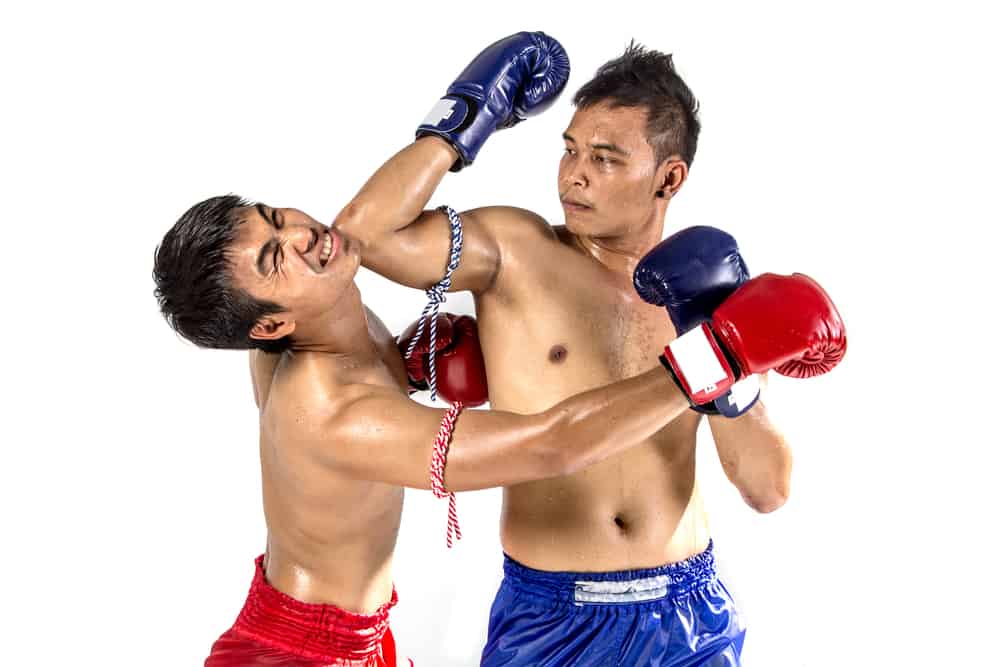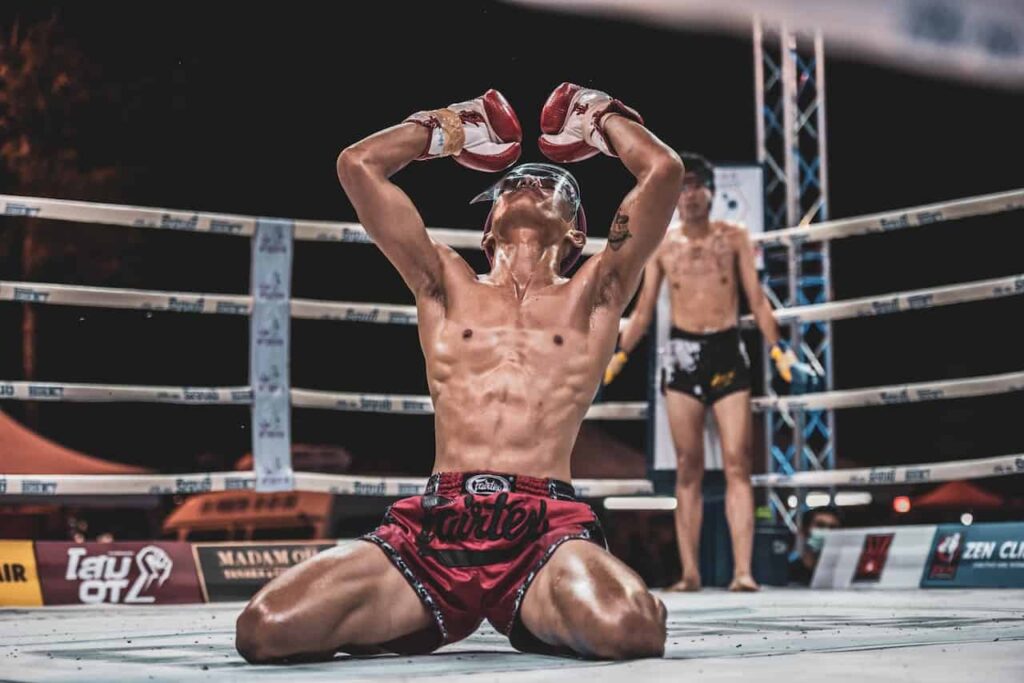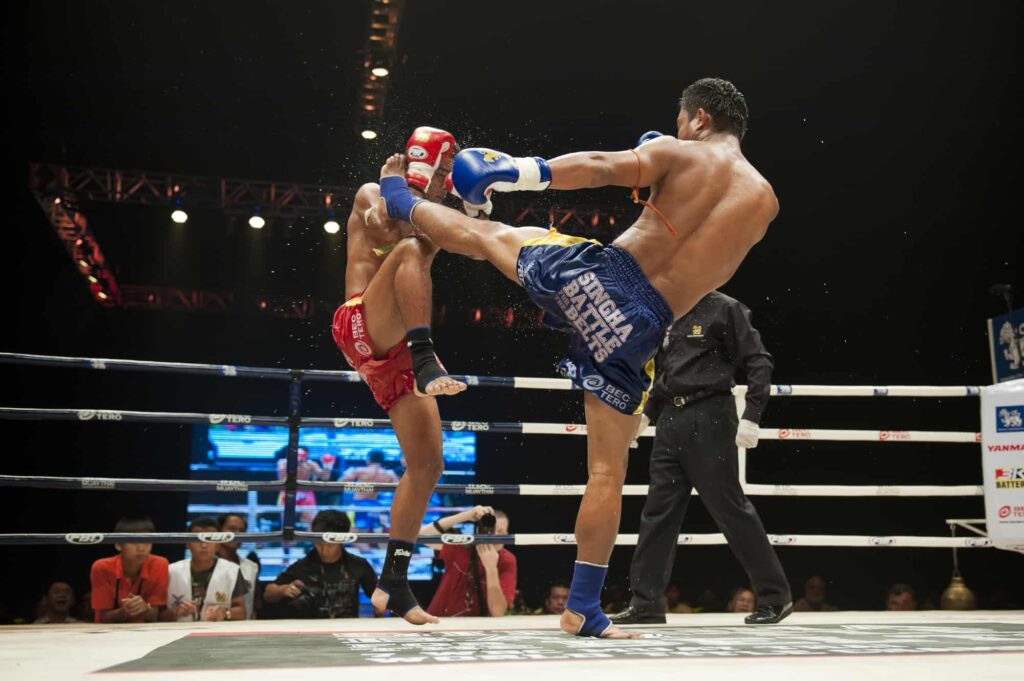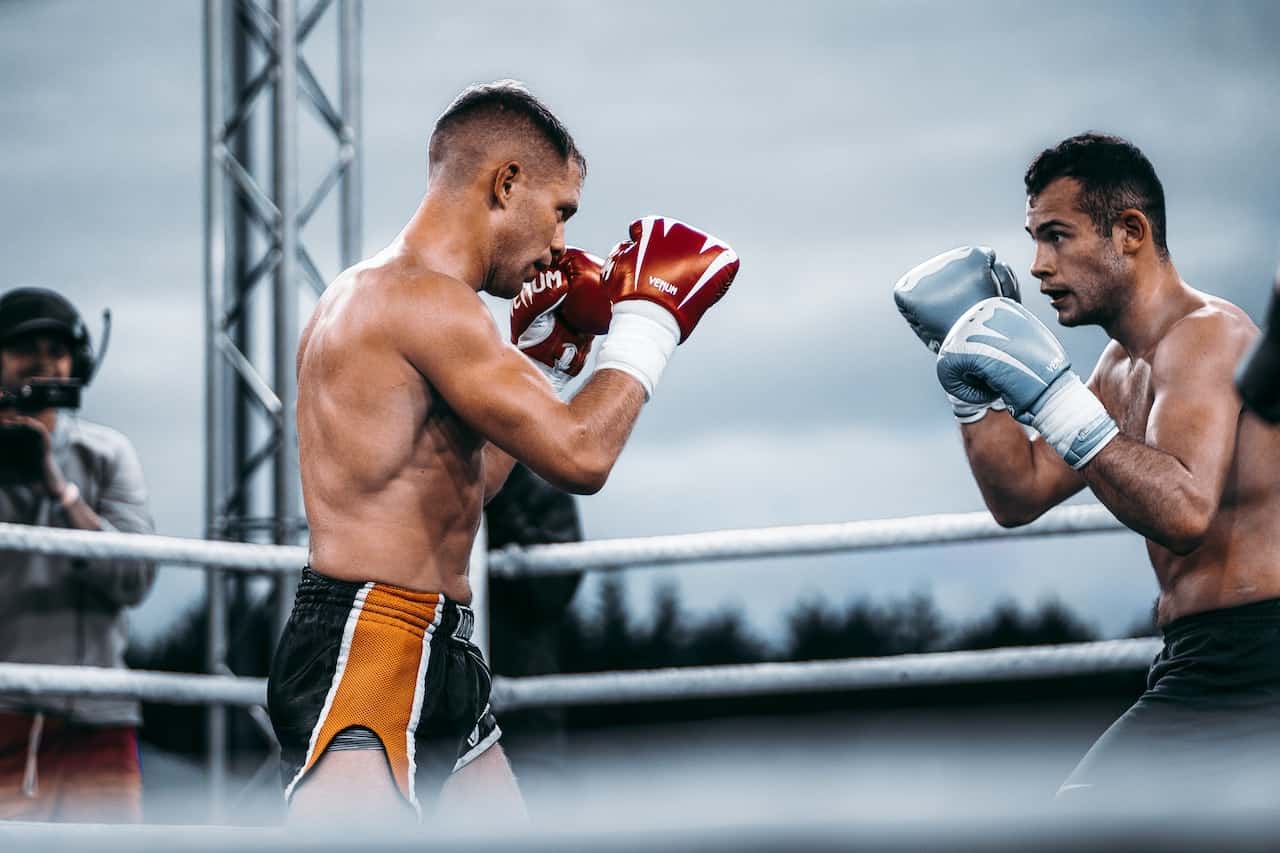What are the main differences as well as similarities, and which style is better when it comes to Glory kickboxing vs Muay thai?
In comparing Glory kickboxing and Muay thai it is first important to understand that Glory kickboxing is not a martial art in and of itself but a style of stand up striking under a particular rule set and promotion.
Muay thai of course, is a well known stand up striking martial art that has a long tradition dating back to the ancient warring periods of the Siam Kingdom (Ancient Thailand).
Today there is much debate and discussion around which is the better stand up style of striking and which is more entertaining to watch – Glory kickboxing vs Muay thai.
In this post we will look at how these two stand up striking styles compare side by side.
What is Glory Kickboxing?
According to the official Glory Kickboxing website: “Glory Kickboxing is a hybrid stand-up fighting sport.”
It is a hybrid style in that Glory allows for virtually all other stand up striking styles to compete with each other under the Glory Kickboxing banner.
The stand up striking styles which are represented or catered for under Glory Kickboxing rules include:
- Karate
- Taekwondo
- Capoeira
- Muay thai
Glory Kickboxing events feature fighters from around the world competing in various weight classes, following a set of rules designed to ensure fair and exciting matches.
The organization has gained popularity for its exciting bouts and has played a significant role in promoting and elevating kickboxing as a competitive and entertaining combat sport.
It uses a set of rules which allows all stand-up martial arts such as Karate, Kung-Fu, Taekwondo, Capoeira, Muay Thai and Kickboxing to compete within one ring.
Glory has 6 weight categories. Each of them with its own annual tournament.
- Featherweight (65kg/143lb): Slam
- Lightweight (70kg/154lb): Grand Slam
- Welterweight (77kg/170lb): Slam
- Middleweight (85kg/187lb): Slam
- Light Heavyweight (95kg/209lb): Slam
- Heavyweight: above 95kg/209lb: Grand Slam
And there are 2 types of tournaments under Glory:
- 8-man tournaments, or Slams
- 16-man tournaments, or Grand Slams
Each tournament is a one night event, with the winner declared at the end of the night.
A non-Title fight is made up of 3 rounds of 3 minutes.
A title fight is made up of 5 rounds of 3 minutes.
In a Grand-Slam tournament, the first fights are a best of 3 rounds of 2 minutes, making the fights even more fast and furious.
Glory Kickboxing vs Muay thai: Main Differences
The main differences between Glory kickboxing vs Muay thai lie in the rule set and techniques allowed when competing in the ring.
Glory Kickboxing does not Allow Elbows
Elbows are a huge part of the Art of 8 Limbs and without elbows, to be honest Muay thai would be called the Art of 6 Limbs.
And that is pretty much what Glory Kickboxing is in terms of allowed techniques and use of the main striking weapons of the body in that only the main 6 limbs of punches, kicks and knees are allowed in competition.

The main reason why elbows are not allowed in Glory kickboxing is because the promotion favours fast paced action in the ring with limited stoppages.
And since elbows often result in cuts which require stoppages and can even end fights, Glory kickboxing prefers not to allow elbows in competition.
Clinching is Limited to 3 secs under Glory Rules
If you are familiar with Muay thai then you will know that the clinch games is a major part of competing and training.
Muay thai fighters who specialise in clinch fighting are known as Muay khao and base their fighting strategy on clinching up and kneeing an opponent while manipulating their movement and controlling them with their powerful clinch.
However, Glory kickboxing does not allow clinching for more than 3 seconds.
This is to keep the striking action at a fast pace which can be slowed down with extending clinching.
Indeed, for many spectators, particularly non-Thai, Western audiences, the muay thai clinch can be very boring to watch and seems to throttle the striking action that Western and non-Thai audiences prefer to see.
Throws and Takedowns are not Allowed in Glory Kickboxing
According to Glory rules throws are not allowed.
The reason is that throws “cut the rhythm of the fight”, especially when fast paced striking action is the main objective of Glory rules.
And there is really no added benefit to takedowns according to Glory rules as there is no follow-through to the ground.
Under muay thai rules, throws, trips, dumps and sweeps are high scoring techniques and are a fairly big part of muay thai fights.
Throws demonstrate dominance over your opponent and excellent technique in order to put an opponent on the ground.
The knees are allowed, making GLORY Kickboxing different from international kickboxing. The rules were created with the goal of maximizing the excitement of the fights and to make them as complete as possible.
Modern Entertainment vs Tradition and Culture
Another noticeable difference even a non combat sport fan would instantly notice between Glory kickboxing and Muay thai is the presentation and promotion.
Glory events are often presented with a modern and entertainment-focused approach, including dynamic lighting, music, and promotion.

The emphasis is on creating an engaging spectator experience.
Muay Thai’s presentation is often more traditional and rooted in the cultural heritage of Thailand.
This includes the performance of the whai kru ram muay before each fight, the use of traditional music, rituals, and customs which are integrated into Muay Thai events.
Pacing of Fights in Muay thai
Muay thai fights are notoriously known for starting out very slow.
Often the first 2-3 Rounds of a 5 Round fight are seen as feeling out and testing periods for both the fighters.
Judges also are known to score muay thai fights much more heavily weighted toward action in the final two rounds of a muay thai fight.
Glory kickboxing on the other hand exhibits fast paced striking action from the outset.
Especially in a Grand Slam tournament with Rounds limited to 2 minutes the action can be particularly fast paced with limited time to test out or ‘feel’ your opponent.
Which is More entertaining to watch?
This really depends on the spectators themselves and what their preferences are when it comes to combat sports.
For the more traditional martial arts fans who appreciate the culture and tradition of Muay thai then watching muay thai would probably be preferred.
And as ‘real’ muay thai fans these spectators understand the intricacies of the clinch and what each fighter is trying to achieve in the clinch i.e either dominating or trying to escape being dominated and the subtleties in the change of grips and positions.

But for your average non-Thai Western fan, the clinch can be very boring to watch and seen more as an impediment to the real striking action.
Glory kickboxing was established to cater to the crowd who appreciate two fighters going at it, full pace with powerful and technical strikes.
For a Westerner, sitting through a full wai khru before each fight can also seem too long to wait to get to the action and they appreciate more of the bright lights and booming sounds of a Glory kickboxing promotion over the traditional Thai music that accompanies each muay thai fight.
The very slow starting pace that muay thai is notorious for also can be a major reason why fans would prefer the fast paced high action from the start nature of Glory kickboxing events.



